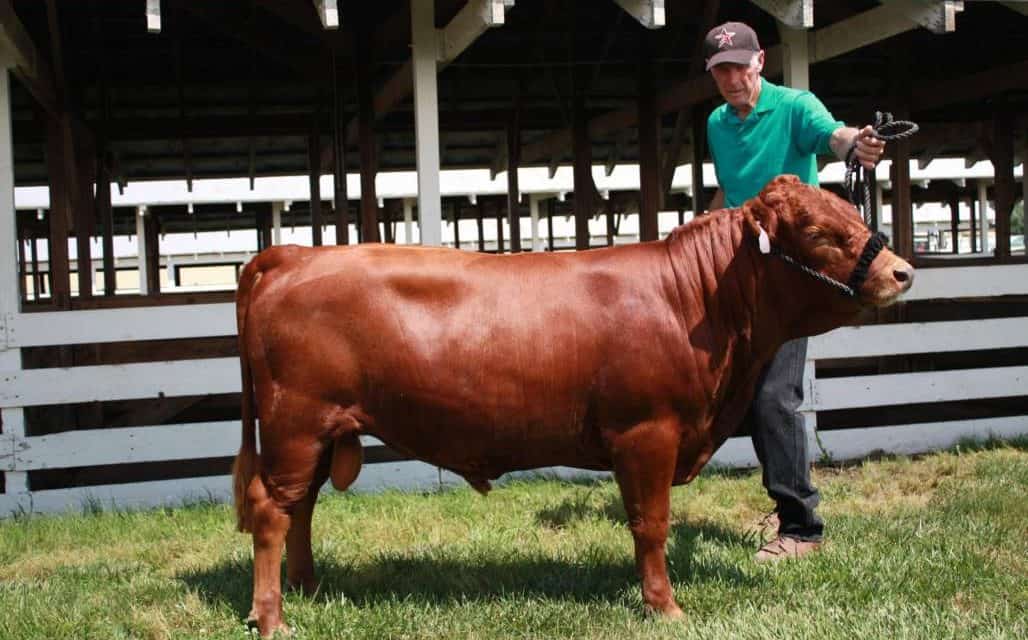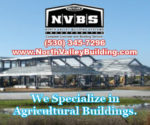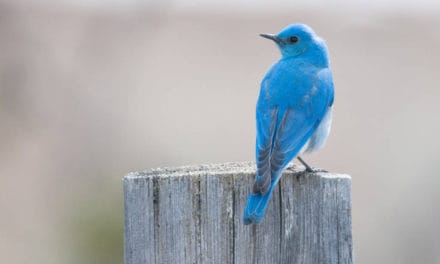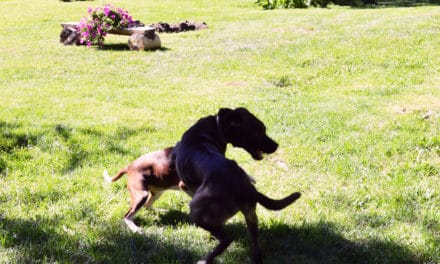In recent years there has been a resurgence of backyard agriculture. Gardens have always been a popular way to ensure that you have a healthy selection of vegetables available—but many people are looking for ways to expand homegrown food choices.
Backyard chickens have experienced a comeback, allowing people to produce fresh, local eggs. There is also a current trend to incorporate fruit trees and berry bushes into residential landscapes.
However, when it comes to small-scale dairy and meat production, there can be many challenges. Most dairy cows and beef breeds require more feed than the typical family acreage provides. Depending on the quality of feed and the condition of the animal (growing, pregnant or lactating), cattle consume approximately three percent of their body weight in feed per day.
When I had Angus cattle, our mature cows weighed about 1,100 pounds. Their feed requirement isn’t a problem when you have hay or grazing land that you want to convert to consumable protein. Although even if a person has enough pasture, the amount of beef you get back from processing might be too much for some people. We butchered steers at roughly 1,000 pounds, which yielded about 600 pounds of meat.
As for dairy production, according to the Holstein Association USA website, the average Holstein cow weighs around 1,500 pounds and produces approximately nine gallons of milk per day—that’s a lot of milk for an average family to make use of!
Cost effective backyard farming requires a versatile animal that is of a more manageable size. Dexter Cattle seem to provide an ideal solution. Not only are Dexters small in stature, they are a dual-purpose breed, which means that they are used for both dairy and beef.
Dairy animals aren’t meant to be efficient beef producers. Their purpose is to create large amounts of milk in the most economical way possible. They don’t carry a lot of muscle, which is meat, partly because it takes more feed to maintain that muscle. On the other hand, beef cows must make enough milk to raise a calf, but they are still designed to turn their feed into meat. Therefore, as a dual-purpose breed, a Dexter cow can be a good milker and her calf would still be well-suited for meat production.
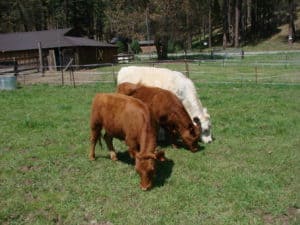
According to the American Dexter Cattle Association (ADCA) website, the breed originally came from Ireland and in the early 1900s approximately two hundred Dexters were imported to the United States. Dexter cattle have become increasingly popular in recent years. The ADCA states that in 1952 there were only 38 owner/breeders and in 2014 the ADCA had over 1,400 members.
Wes and Jane Patton, of Glenn LandFarms in Orland, have been raising Dexter cattle since 1989. After 35 years of teaching, Wes retired from California State University, Chico, where he was an instructor in the agriculture department.
“We strive to produce high quality cattle and we have enough variation that we can satisfy those customers who want to emphasize beef, those who want to milk them, those who want to just look at them and those that want to do all of the above,” Wes said.
Their mature Dexter cows usually weigh about 500 to 600 pounds and are 38 to 42 inches tall. Glenn Land steers are processed at 16 months of age, with a typical live weight of 700 pounds. Wes explained that a dual-purpose breed has a dressing percent of around 58%, which would yield about 400 pounds of beef. The milking Dexters produce approximately 2 gallons of milk per day.
The ADCA website states that Dexters come from an area in Ireland “where they were bred by small land holders and roamed about the sheltered less mountainous districts…” and that they thrive in both hot and cold climates. Wes confirmed that their cattle do well in Orland, as well as in cooler areas.
Dexter cattle also have a reputation for being very docile. This gentle disposition is an important characteristic at Glenn Land Farms. Wes told me that they perform a “temperament score” on their calves at weaning, which also helps to match them up with prospective owners.
In the past, some Dexter cattle suffered from two genetic conditions: Chondrodysplasia, which is a form of dwarfism and a lung disease called PHA or Pulmonary Hypoplasia with Anasarca. Dexter Cattle Associations and breeders have used extensive genetic testing and good breeding management to eliminate these defects.

According to the ADCA website, Dexter cattle come in black, brown, or red colors.
Dexters are available with horns, polled (naturally hornless) or dehorned. The breed was originally horned, and although horns may look beautiful and impressive, they can be dangerous to people and to other animals.
“We have found that most of our customers want homozygous, polled cattle that don’t have horns and won’t produce calves that need to be dehorned,” Wes stated.
One of their customers, Juliana Yolten, is a ninth grade student at Indian Valley Academy where she is a member of the FFA (Future Farmers of America). She purchased two Dexter calves, a heifer and a steer, from Glenn Land Farm in 2015.
Juliana and her mom, Beth, plan to milk the heifer, named Genevieve, and produce their own dairy products. The little steer, Caleb, will be providing their family with some homegrown beef in the fall of 2016. Juliana also has a Charolais market steer that she will be exhibiting at the Plumas-Sierra Fair in Quincy this August.
Juliana’s Dexters are beautiful animals and quite friendly. Her three cattle were all born within one month of each other and it is interesting to see the size difference between the two Dexters and the Charolais, which is a typical beef breed.
The hardy, little Dexter cattle possess various qualities that seem to satisfy many of the requirements for small-scale livestock management. Their compact size makes them easier to handle and not as destructive to fences or pastures. Considering their reduced feed requirements, they are a practical option for someone with limited acreage.
With the versatility of a dual-purpose breed, they are reminiscent of the old-fashioned family cow…in a smaller size.
For cattle ranchers, Dexter bulls could help alleviate calving problems when breeding to first-calf heifers. Plus it seems that with the increased interest in backyard farming, there would be a robust market for dual-purpose, smaller cattle.
Glenn Land Farms also raises Dorper Sheep. Wes said that Dexter cattle complement their sheep in a “leader-follower grazing program” and help to control predators. Their website is www.glennlandfarm.com.

For more information on Dexter cattle the American Dexter Cattle Association website is www.dextercattle.org and the Purebred Dexter Cattle Association website is www.purebreddextercattle.org.

